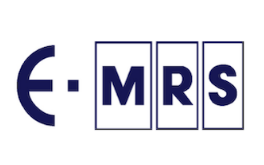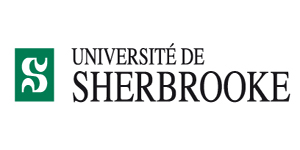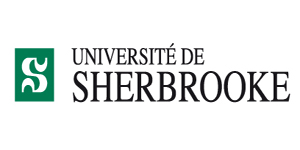In this interview we will discover an exciting field of study within Materials Science: Cultural Heritage Materials. So, whether you’re interested in challenging ways of applying your Materials Science knowledge, in discovering new advances made possible by ancient materials or if you are simply curious about what career paths you can envision, look no further!
Here Dr. Giulia Francheschin will tell us a bit about Cultural Heritage Materials in general, practical applications, her daily life at work, her career path and some advice for those who are interested in working in this field.
© Paris MRS Chapter
You will find below the highlights of the questions and answers, or watch the video for the full interview.
Dr. Giulia Franceschin obtained her PhD in Nanoscience and Materials at Université de Paris in 2017, and is now a postdoctoral researcher at the Center for Cultural Heritage Technology of the Italian Institute of Technology. She is an expert in Materials Chemistry and Solid-state Physics, with a focus on the study of complex and heterogeneous microstructures (such as those found in Cultural Heritage Materials) and the development of novel nanostructured materials for the consolidation and protection of ancient objects.
What exactly are Cultural Heritage Materials? And why is it important to study them?
This is a somewhat new term in the scientific field, and talking about Cultural Heritage Materials sometimes can be confusing or even misunderstood. By Cultural Heritage Materials we intend all those materials being the result of long-term interaction with the environment that hosted them during their history, from the moment of their formation until the moment they were discovered. That could be in burial or marine conditions or in protected environments (in private collections for instance). The nature of the environment hosting the materials in general is fundamental to determine the process of alteration affecting them. These ancient materials are important evidence of the aging effects from a long-time range perspective, so the study of their physicochemical properties is a main source of information to predict the long-term behavior of modern materials too. Their study is inspirational for the development of multiple, novel research domains, and technological applications, including the design of long lasting and high resistance materials. For instance: certain types of exceptionally preserved Roman glass are studied to optimize the composition of nuclear waste glass and ensure higher chemical stability once placed in underground deposits. All these implications are extremely interesting and intriguing from my point of view, and give me the motivation to pursue my research in this field.
How does all this complexity within the field of Cultural Heritage Materials (of different materials and different aging processes and different applications…) relate to Materials Science?
Even though we are approaching the scientific aspect with historical and archaeological questions, we are still studying these objects from a Materials point of view. Cultural Heritage Materials are above everything materials, following the same rules and characteristics that we studied at our Materials Science classes. The supplementary complexity level consists in the fact that we are not dealing with simplified systems, as we often are when studying synthetic or model systems. These materials are the result of real transformations, or are even still undergoing transformation. These features make them extremely heterogeneous from a morphological and physicochemical point of view. One of the most important challenges of their study is to define the most adapted technique to characterize them, while taking into account the need of being nondestructive and non-invasive. These aspects push the research towards the development of new multi-scale diagnostic tools, and the need of complementary digital technologies to facilitate the data processing of very big data sets. It is a very transdisciplinary research domain.
Would you say that this transdisciplinarity is the main difference between your previous experiences in academia and your current work?
For sure, the transdisciplinarity is stronger. It is already very important whenever you want to accomplish complete and deep research, but in this case, it is brought to the extreme. You are interfacing very different study domains, from art history, archaeology, conservation, to material science, engineering and physical chemistry. I have faced this transdisciplinary approach during my previous postdoc, when I was working at the synchrotron SOLEIL and studying Cultural Heritage Materials. That is when I started working in this field. I did not build my entire career around this topic, but I built it little by little trying to bridge all my previous experiences.
And since we started talking about your career path: how did you get there and what led you to those choices?
Originally, I am a Materials engineer. I have a very technical formation that is at the center of my scientific approach, even when studying historical and art objects. I started understanding that I wanted to be a researcher during my PhD experience at the laboratory ITODYS, when I understood the importance of pushing our curiosity beyond what is already known and established. This experience gave me a very strong foundation for the next step of my scientific career, even if the topic was different. The knowledge on solid and nanostructured matter is the main inheritance I had from my PhD, together with the strong approach of investigation and characterization based on coupling the most diverse characterization techniques to make complementary studies and understand the materials I was preparing. This approach is the same I kept during my postdoc at the Synchrotron Soleil, where I started using synchrotron radiation techniques for the study of non-homogeneous and ancient ceramic materials and that I found to be in a certain sense similar to the nanostructured ceramics I studied during my PhD. I found some contact points, even if the main scientific domains are completely different. And this is what I still keep in my actual project where I’m using even more of the experience that I acquired during my PhD, because now I’m even exploiting my knowledge on the synthesis of new nanostructured materials, other than using the characterization methods.
And how does this change in your field of study translate to the techniques? Did you already know all the techniques you currently use? Did you need all the techniques you knew before? Did you know everything?
We never know everything; we never stop learning. So yes, every time I start a new project, I am learning new things. My strong characterization bases are structural and electron microscopy analyses, which helped me a lot in building my network of and my protocol for studying materials that sometimes are completely confusing. I sometimes do not really understand what I am looking at, so I need to experiment with novel analytical techniques or adapt the existing ones to my needs. You always need to know very well the instruments you are using and keep clear in mind what you are looking for. Another very important aspect of the study of Cultural Heritage Materials is the sample preparation, because you need to minimize any invasive manipulation of the objects you are studying. The best condition is always when you can analyze the object without any preparation needed, so sometimes the instruments or techniques are adapted to perform analysis in these conditions. You always have to deal with compromises between the quality of the acquired data and the need of performing non-invasive protocols. This very challenging aspect was not a main subject during my previous research, when I was working on synthetic materials, and I had to learn it when I approached this research domain.
So apart from learning new techniques, researching, learning how to prepare samples and choosing among the techniques you know, what does your typical day and your responsibilities look like?
Our lab is quite small. We are divided into main research domains. I am part of the chemical and material engineering team. We are a very young team; I work with many PhD and master students that are interested in approaching this domain and help us carry out material characterization and chemical preparations. The second team, which is always in a dialogue with my team, is the one of computer vision and artificial intelligence. My colleagues from this team work on the aspects of data treatment and development of new algorithms to facilitate the data analysis. We are working with data from satellites to detect new archaeological sites from space and developing AI techniques for the recognition of archaeological sites from space. My typical day is… There is not a typical day! I spend a lot of time working with students, or doing syntheses or characterizations myself. For instance, I have spent one month in our main hub in Genova to learn new synthesis procedures to apply for the preparation of consolidating and protective treatments for ancient glass. Now we are recording a documentary film where we show our analytical techniques to analyze ancient manuscripts, you can watch it on the big screen soon! So I cannot describe one typical day in my lab. It is very, very, varied. And this is the nice aspect of my job.
And what about the field itself? How exactly does the field of Cultural Heritage Materials compare to more traditional areas within Materials Science? What is the most unique thing about it?
I think it’s still quite a new field. There is still a lot of confusion on the research work carried out but there are plenty of potential applications for many different domains ranging from Green Chemistry, to material engineering and nanomaterials. Even thinking about data treatment, there is a lot of room for the application of computer technologies and Advanced Data Analysis and artificial intelligence. So, it is a very, very rich environment where you can discuss with experts of the most different domains: historians of art, engineers, chemists, physicists, and once again, this is for me the best part of it.
What would you say that this experience in such a diverse and interactive field brought to you as the most positive aspect? And what advice would you give to students that want to work with Cultural Heritage Materials?
I just want to point out that my experience in this domain taught me to see problems from different points of view, to enlarge my field of view without losing the sensitivity for the smaller details. This opened my mind and helped me learn new things. I bring this mantra with me every day. I would like to recommend to follow your passion and to cultivate your curiosity rather than following a much-defined path when you are preparing your future, because when you do something with passion, you are certainly doing it better.
À lire aussi

First Joint European MRS Chapter workshop
The Paris MRS Chapter is glad to organize the first joint European MRS Chapter workshop in collaboration with Cologne/Germany, Hasselth/Belgium and Genova/Italy MRS Chapters in Paris. From 19th to 22th March, you will have the chance to share and discuss...

PhD project – Biomaker parameters identification for food allergens detection
PhD project in Canada Position DescriptionHealth Canada requires the food industry to declare 10 allergens and gluten sources on food packaging. Given the growing number of tests required, and the high cost of allergen detection methods such as...

PDF Project – Biomarker parameters identification for food allergens detection
Proposal for a postdoctoral fellowship in Canada. Position Description Health Canada requires the food industry to declare 10 allergens and gluten sources on food packaging. Given the growing number of tests required, and the high cost of...

PhD project – Signals quantification of Raman probe for allergen detection
Proposal for a PhD project in Canada Position Description Health Canada requires the food industry to declare 10 allergens and gluten sources on food packaging. Given the growing number of tests required, and the high cost of allergen detection...
